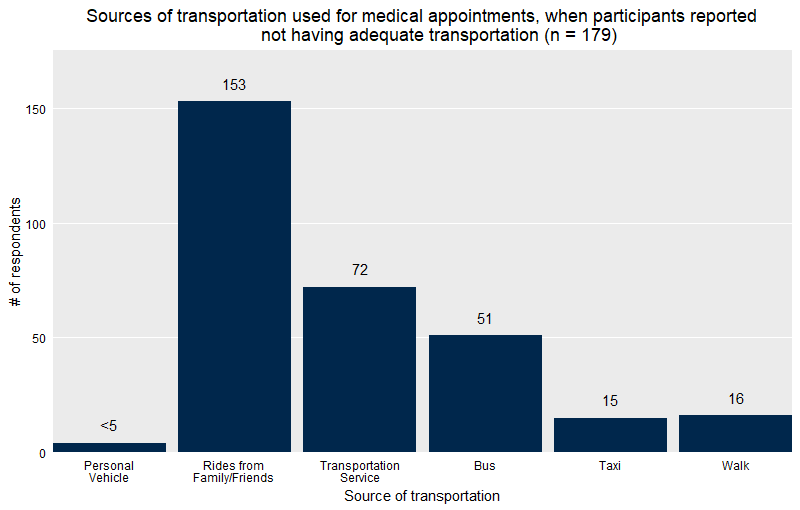Health Services Research
Session: Health Services Research 3: Access
230 - Availability of Transportation to Medical Appointments for Children and Young Adults with Sickle Cell Disease in Michigan
Sunday, May 5, 2024
3:30 PM - 6:00 PM ET
Poster Number: 230
Publication Number: 230.1901
Publication Number: 230.1901

Samyuktha (Simi) Neeluru, BSE (she/her/hers)
Research Assistant
University of Michigan Medical School
Canton, Michigan, United States
Presenting Author(s)
Background: Sickle cell disease (SCD) is an inherited blood disorder that predominantly affects Black and Hispanic communities. Transportation insecurity, or the lack of resources needed to go places, is an adverse social determinant of health that disproportionately impacts marginalized communities. Little is known about transportation availability among children and young adults living with SCD.
Objective: To examine caregiver and self-reported transportation availability to medical appointments among children and young adults living with SCD in Michigan.
Design/Methods: In partnership with the Michigan Department of Health and Human Services, the Sickle Cell Disease Association of America-Michigan Chapter created Health Status Assessments (HSA) to collect information on barriers to care among individuals with SCD in Michigan. HSAs were answered by parents (children < 18y) or self-reported (≥18y). The study population included individuals < 25y with a completed HSA from 2013-2021. The HSA questions assessed availability of transportation, owning a vehicle, and types of transportation to travel to medical appointments and during medical emergencies. The proportion of individuals that answered yes, no, or sometimes having adequate transportation was assessed, overall and by age groups. A chi-square test assessed the relationship between age and transportation access, and type of transportation used for medical appointments and emergencies was stratified by transportation availability.
Results: The study population consisted of 758 individuals: 50% female (n=378) and mean age 10.2 (SD=7.4). 74% reported “Yes”, 24% reported “No”, and 3% reported “Sometimes” having transportation for medical appointments. A lower percentage of the 18-24y group reported having access to transportation compared to other age groups (p < 0.001). Among those with adequate transportation, 97% reported owning a vehicle (Figure 1a). Of those without adequate transportation, 85% reported getting “rides from family and friends” (Figure 1b). In a medical emergency, 96% of participants with adequate transportation reported using their own car, whereas 89% of participants without access reported getting “rides from family and friends”.
Conclusion(s): There is a need to address transportation barriers for people with SCD in Michigan, as 1 in 4 children and young adults reported transportation insecurity for medical appointments. Further, transportation insecurity may be more prevalent among young adults, a particularly vulnerable time for this population. Medicaid policies prioritizing travel reimbursement should be leveraged among this population.
.png)

